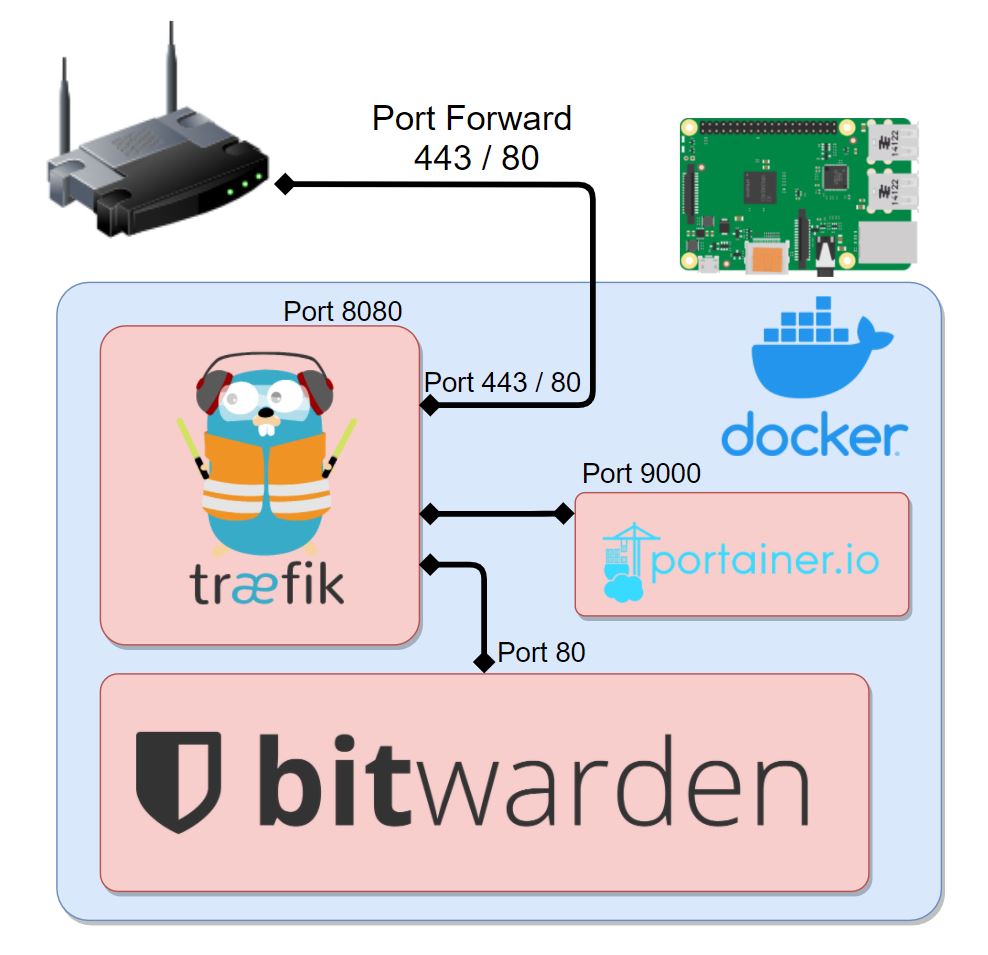


Important things here: under change the information to match whatever is appropriate for your own context and under add the various names and IPs under which you may access your nas from a browser. KeyUsage = digitalSignature, keyEnciphermentĮxtendedKeyUsage = clientAuth, serverAuth To generate the SSL certificate, I used a minimalistic ssl configuration file that I saved under the name nf with the content below:ĭistinguished_name = req_distinguished_name Here I take a simpler and quicker approach compared to the tutorial. SSL Self-Signed certificate configuration In the nf file line 6 should read:Ĭode: Select all return 301 Notice the https port number 8443ģ. In the tutorial there is a small typo in the Nginx config, the redirection from http to https will not work. Also change the ADMIN_TOKEN to your own token, that is generated using the following command (make sure to save that key somewhere this is needed to access the bitwarden admin console):Ģ.
#Bitwarden docker free
Note that my instance of bitwarden is running on ports 8000 (http) and 8443 (https), feel free to change it to whatever works for you. BACKUP_FILE=/data/db_backup/backup.sqlite3 Image: bruceforce/vaultwarden-backup:latest I mostly followed the tutorial that you can find here: with some minor adaptations:įor the docker compose I used the Vaultwarden image, its corresponding backup tool image and a slightly more up to date version of Nginx I've just finished deploying Bitwarden (actually it's Vaultwarden now) on my Qnap TS-251+ and the process was relatively smooth and easy.


 0 kommentar(er)
0 kommentar(er)
